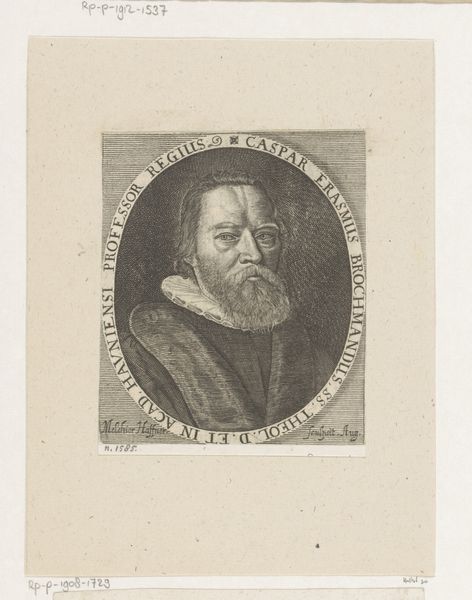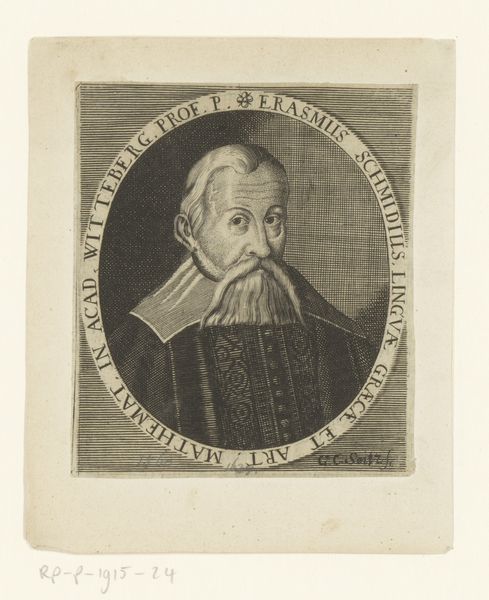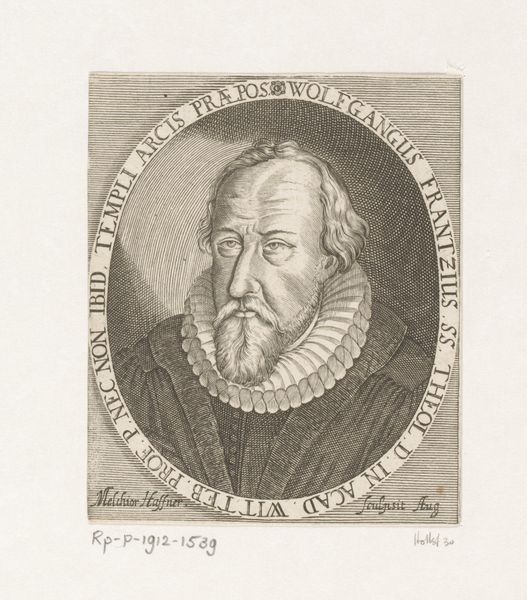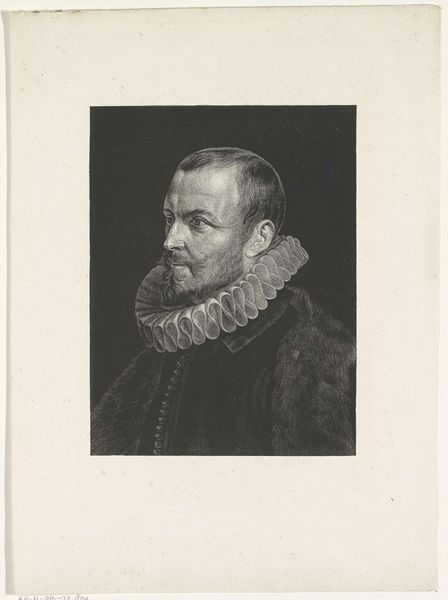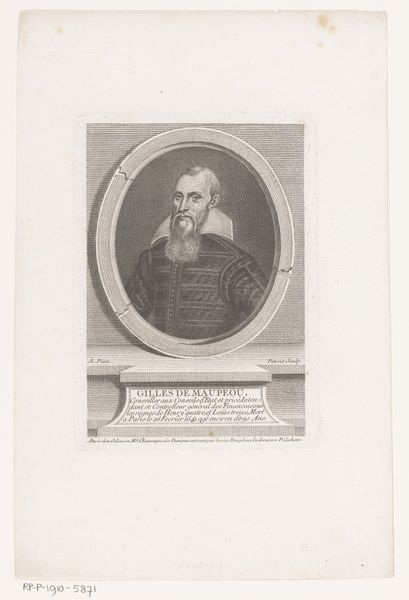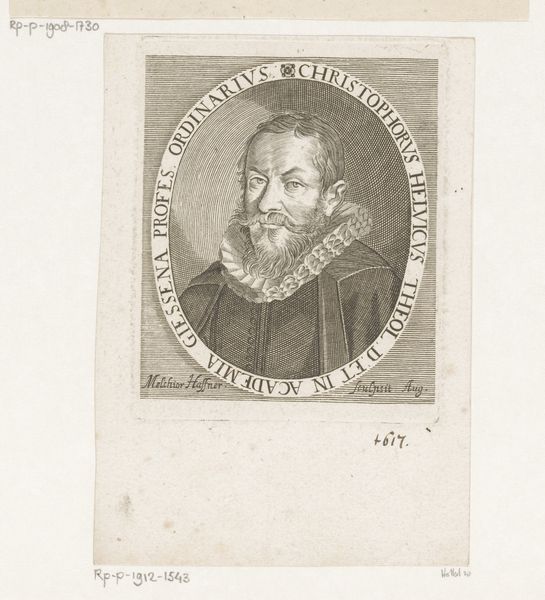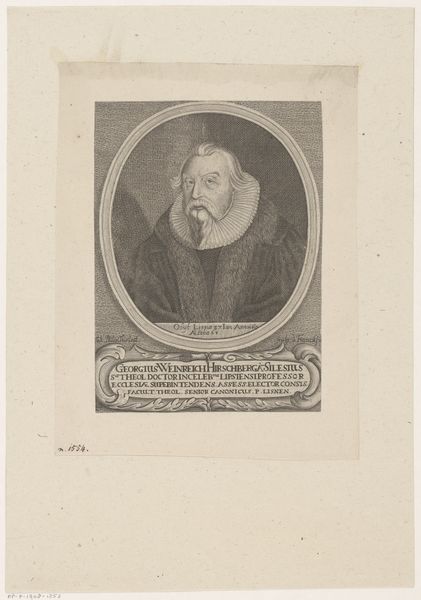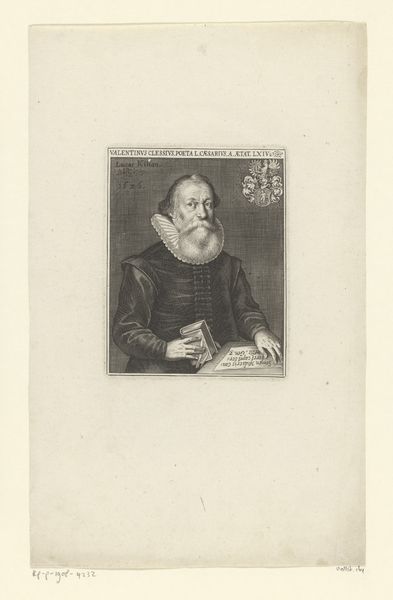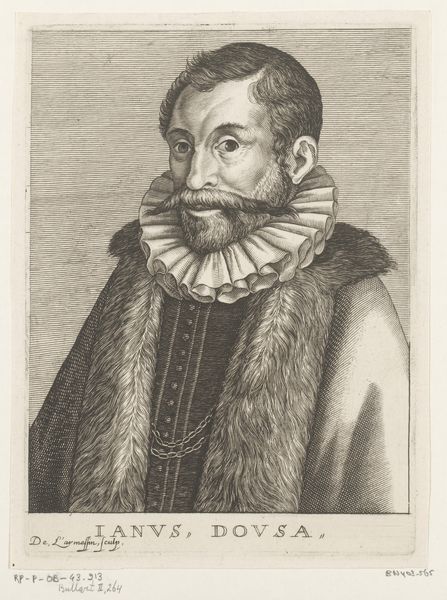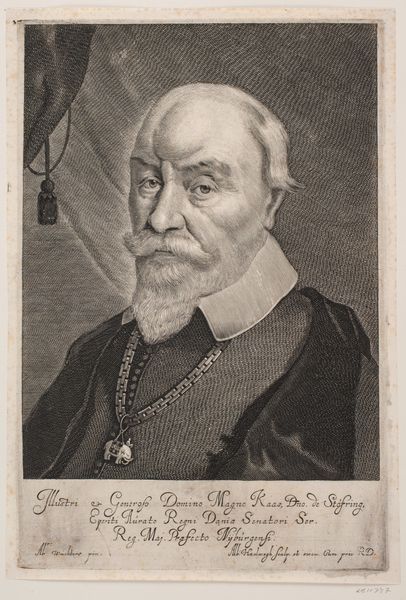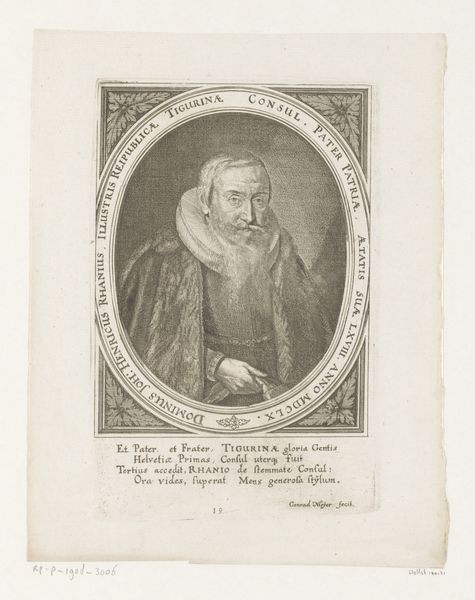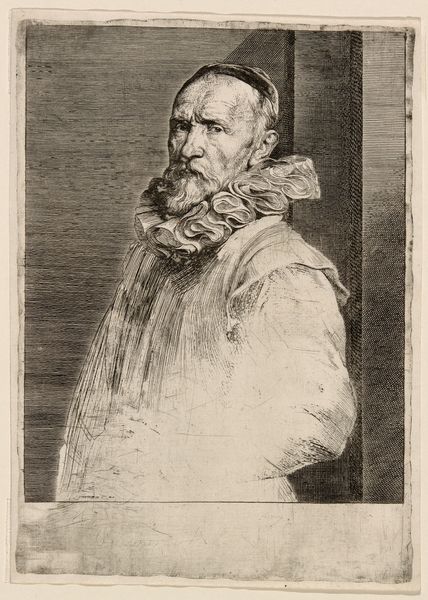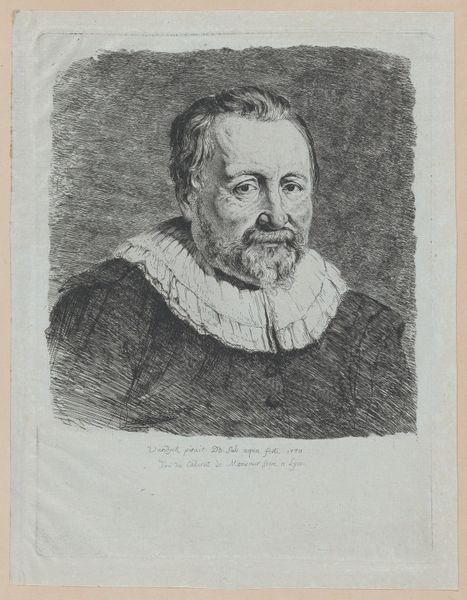
print, engraving
#
portrait
#
pencil drawn
#
baroque
# print
#
portrait reference
#
pencil drawing
#
line
#
portrait drawing
#
history-painting
#
engraving
Dimensions: height 125 mm, width 86 mm
Copyright: Rijks Museum: Open Domain
Curator: Up next, we have a piece titled "Portret van Matthäus Schiller." It’s an engraving currently held at the Rijksmuseum. It’s difficult to put an exact date on its creation, sometime between 1656 and 1722, but an inscription mentions the year 1602, hinting at Matthäus Schiller’s lifetime. Editor: There's a quiet intensity to it, don't you think? The somber tones create this sense of reserved power, all held within this rectangle, a tightly controlled world. Curator: Portraits such as these were powerful markers of social status during the Baroque period. Consider his high collar and sombre robes—details that announce Schiller's station in life as a Rathschreiber or city clerk, in Nurnberg. The engraving itself mirrors this formality. Editor: It makes you wonder about the accessibility of art in those times. Prints, like this engraving, played a vital role in circulating images beyond the elite. They democratized portraiture, if you will, allowing a wider audience to connect with notable figures, even after their passing. Curator: Exactly, printmaking holds such unique power. What fascinates me is how these printed images carry so much symbolic weight despite their monochrome nature. The play of light and shadow, so skillfully rendered, gives Schiller’s face a striking presence. I also wonder about the meaning of that particular high, white collar around his neck; perhaps some kind of symbolism attached to a particular guild of societal station. Editor: Interesting point! One could examine that detail through an iconographic lens. It does speak to a particular moment in fashion history and the societal values attached to it. For audiences today, such images become portals to the past, reminders of shared histories and power structures. Curator: Indeed. This image echoes across time. Even now it elicits emotion in us centuries later. It really encourages a dialogue between past and present. Editor: Absolutely, considering its production and reception encourages discussion about how these portraits helped to solidify authority and leave a mark.
Comments
No comments
Be the first to comment and join the conversation on the ultimate creative platform.
